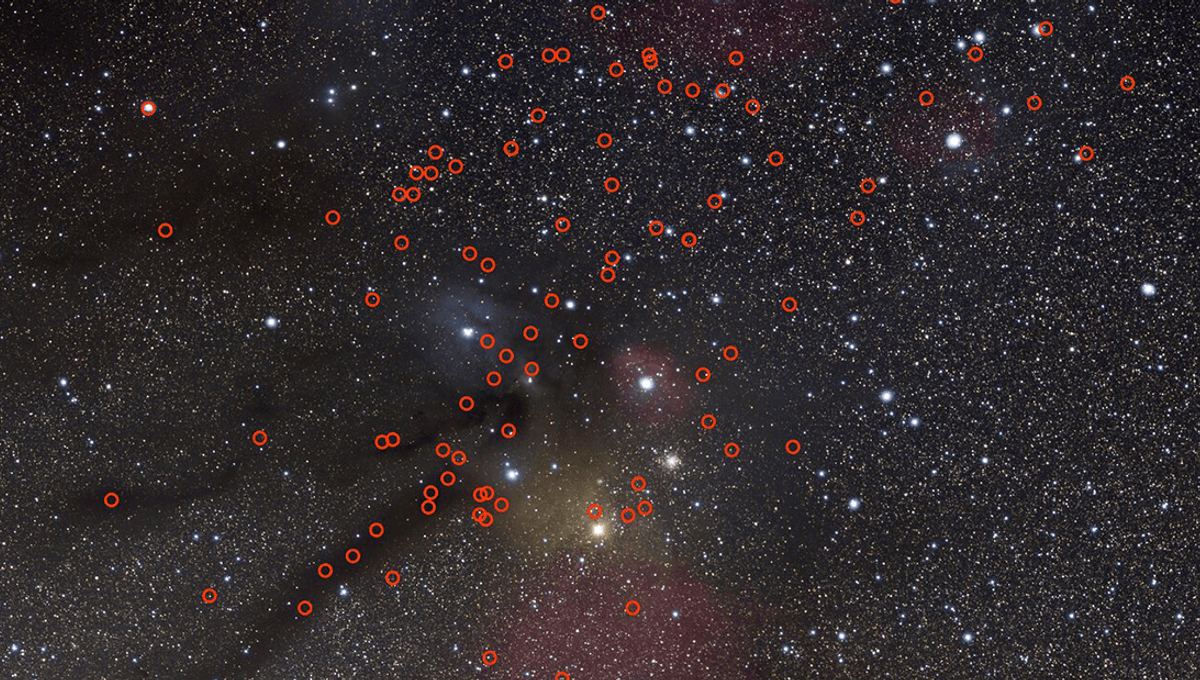
In the hit Netflix sci-fi series 3 Body Problem, several of the main characters are sent a mysterious virtual reality (VR) videogame, in which the protagonist is asked to help an alien species solve a problem: how to predict the movement of their planet’s three suns.
The three-body problem is an interesting and real one, presenting the simulated aliens with a seemingly impossible task of how to survive on a world thrown into chaos by the three suns influencing it. There are other hypothetical planets where life may (or may not, if they turn out not to exist) emerge despite similarly strange challenges. One such type of world – proposed by cosmologist Dan Hooper and astronomer Jason Steffen in 2012 – relies on dark matter to make life possible.
As far as astronomers studying the observable universe can tell, only around 5 percent of it is made up of matter. The rest, or the overwhelming majority of it, is made up of dark matter (around 27 percent) and dark energy (around 68 percent).
Dark matter is invisible matter that doesn’t emit its own light and only interacts with normal matter through gravity, which we can see evidence for in galaxies and galaxy clusters. As explained in the 2012 paper, when weakly interacting massive particles (WIMPS) come together they annihilate each other, releasing energy.
“The mass of the dark matter contained in our universe represents an enormous energy reservoir – a factor of approximately 103 times greater than the total energy that would be released through the fusion of all of the universe’s hydrogen into helium,” the paper explains. However, dark matter generally does not collide enough to release enough energy to have an impact on an ecological scale.
“An exception to this conclusion, however, could possibly be found for dark matter particles that have become gravitationally captured in a planet’s interior. Dark matter, in the form of weakly interacting massive particles (WIMPs), is generally predicted to interact with nuclei, enabling them to lose momentum and become gravitationally bound and captured by stars or planets. After accumulating in a planet’s interior, these dark matter particles can, in many models, subsequently annihilate to produce energetic particles that are then absorbed by the surrounding material.”
Interactions within Earth would only account for a few megawatts of energy. More massive planets in areas of high-density slow-moving dark matter, however, could capture enough dark matter to heat the planet enough to keep water in a liquid state on its surface. This could plausibly happen, according to the team, even on rogue, sunless planets.
“On these rare planets, it may be dark matter rather than light from a host star that makes it possible for life to emerge, evolve, and survive.”
These planets, if they exist, would most likely be found in areas with a lot of dark matter, such as in dwarf spheroidal galaxies, or at the center of galaxies like the Milky Way. Life on these planets would be very different from Earth, likely existing on a thin surface layer above a molten interior. But in terms of evolving complex life, such a planet might have a few advantages, the main one being time. According to the team, if enough dark matter is captured by such a planet, it could potentially keep the surface warm enough for liquid water to be present for trillions of years.
“Given their extremely long lifetimes,” the paper concludes, “such planets may prove to be the ultimate bastion of life in our universe.”
Though it’s unclear how we would detect such planets, it’s possible that there are planets out there, maybe free from their host stars and floating through interstellar space, sustaining life in a fairly stable environment for its inhabitants. In those sorts of time frames, who knows what kind of life these planets could evolve.
The paper is published in the Journal of Cosmology and Astroparticle Physics.
Source Link: Dark Matter Could Support Life On Rogue Planets With No Sun